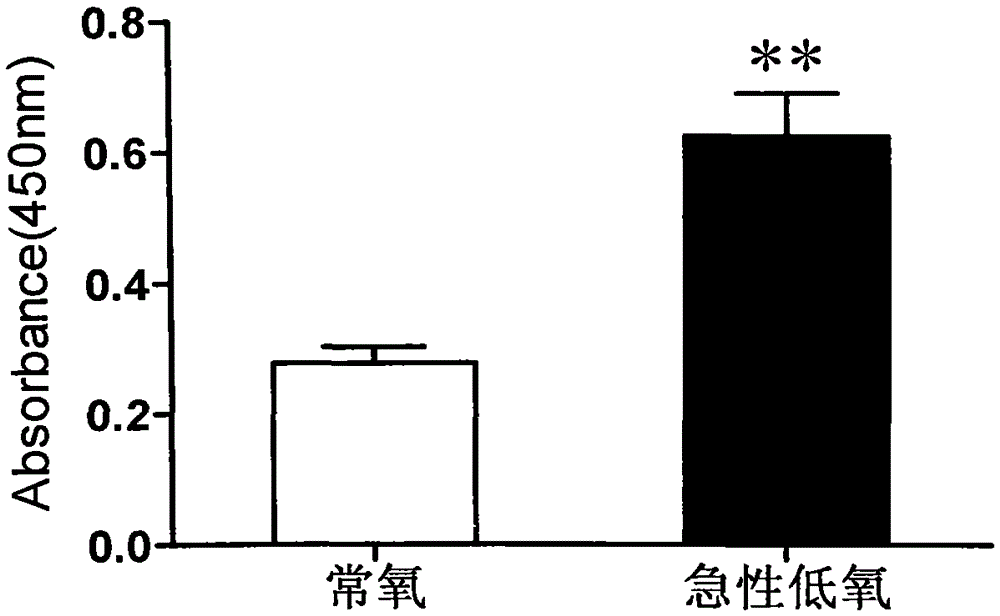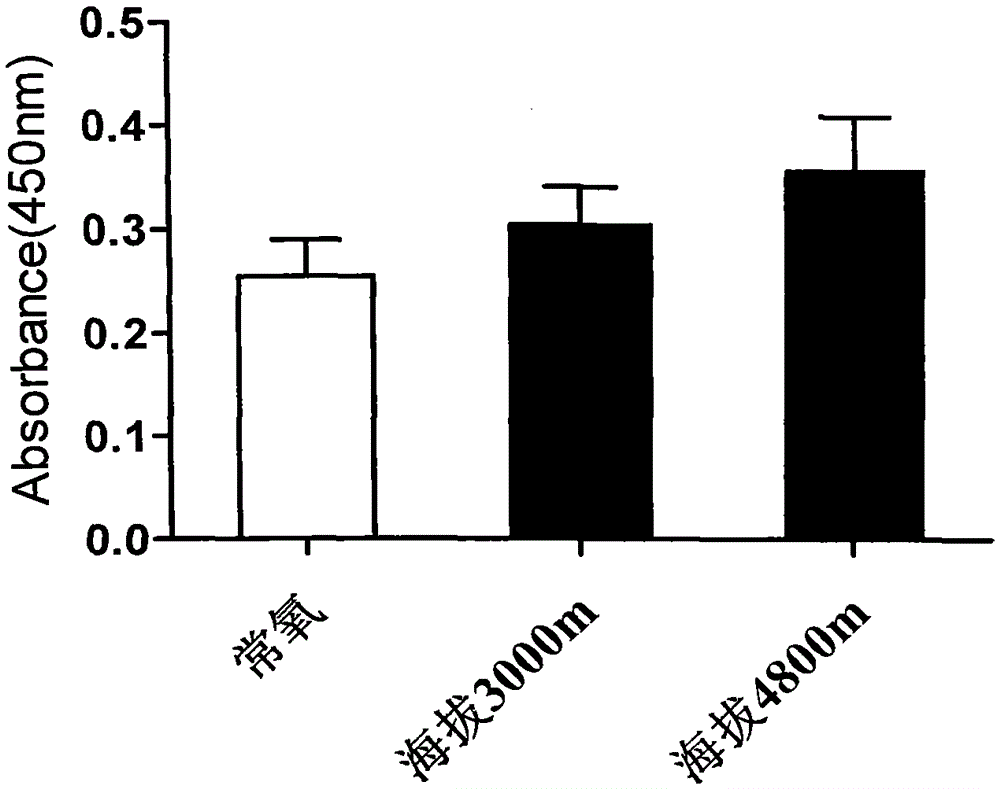Hypoxia marker molecule chl1 and its application
A CHL1 and marker technology, applied in the field of biomedical materials, to achieve sensitive and reliable detection
- Summary
- Abstract
- Description
- Claims
- Application Information
AI Technical Summary
Problems solved by technology
Method used
Image
Examples
Embodiment 1
[0017] Embodiment 1 mouse hypoxia experiment
[0018] (1) Acute hypoxia
[0019] Forty C57 mice with an average weight of 22-24 g (provided by the Animal Center of the Academy of Military Medical Sciences) were divided into two groups, 20 in each group, which were the control group and the acute hypoxia group. Experimental animals were treated in normoxic and hypoxic chambers (given 5000 meters of hypobaric hypoxia) for 24 hours. The hypoxic chamber rose to 5000 meters at a constant speed of 20 m / s, and dropped to normal oxygen at a constant speed of 20 m / s after the experiment. Immediately after the end of the hypoxic treatment, the eyeballs were removed to collect blood for the detection of CHL1.
[0020] (2) Chronic hypoxia
[0021] Sixty C57 mice with an average body weight of 22-24 g (provided by the Animal Center of the Academy of Military Medical Sciences) were divided into 3 groups, 20 in each group, which were the control group, the chronic hypoxic 14-day group, an...
Embodiment 2
[0044] Embodiment 2 people's hypoxic experiment
[0045](1) Simulated plateau hypoxia: 10 volunteers were randomly selected to enter the hypoxic chamber, and blood was collected from veins in hypoxic environments in normoxia, simulated altitude 3600m, and altitude 4800m, respectively, for the detection of CHL1.
[0046] (2) Extraction of plasma
[0047] Put the collected blood into a test tube containing an anticoagulant (dipotassium ethylenediaminetetraacetic acid), mix it, and centrifuge it at 3000rpm for 10min to separate it from the blood cells. The supernatant is obtained as plasma. Plasma was stored at -80°C for later use.
[0048] (3) CH1 content in plasma extracted by ELISA
[0049] Reagent:
[0050] 1. Carbonate coating solution: 3.03gNa 2 CO 3 , 6.0g NaHCO 3 , dissolved in 900ml double distilled water, adjust the pH to 9.6, and dilute to 1L;
[0051] 2. PBS: 1.16gNa 2 HPO 4 , 0.1gKCl, 0.1gK 3 PO 4 , 4.0gNaCl, dissolved in 500mL distilled water, adjust the ...
PUM
| Property | Measurement | Unit |
|---|---|---|
| absorbance | aaaaa | aaaaa |
| absorbance | aaaaa | aaaaa |
Abstract
Description
Claims
Application Information
 Login to View More
Login to View More - R&D
- Intellectual Property
- Life Sciences
- Materials
- Tech Scout
- Unparalleled Data Quality
- Higher Quality Content
- 60% Fewer Hallucinations
Browse by: Latest US Patents, China's latest patents, Technical Efficacy Thesaurus, Application Domain, Technology Topic, Popular Technical Reports.
© 2025 PatSnap. All rights reserved.Legal|Privacy policy|Modern Slavery Act Transparency Statement|Sitemap|About US| Contact US: help@patsnap.com



